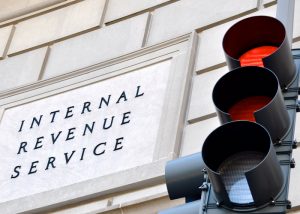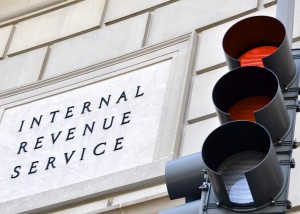Individual Tax Provisions:

New Tax Rates and Brackets: For tax years 2018-2025, seven tax brackets apply for individuals: 10%, 12%, 22%, 24%, 32%, 35%, and 37%. For tax years 2018-2025, the taxable income of a child attributable to earned income is taxed under the rates for single individuals, and taxable income of a child attributable to net unearned income is taxed according to the brackets applicable to trusts and estates. This rule applies to the child’s ordinary income and his or her income taxed at preferential rates. The new law leaves the preferential rates on capital gains and dividends unchanged.
Personal Exemption Deduction Eliminated: Under pre-act law, the deduction for each personal exemption was $4,150 for 2017, subject to a phaseout for higher earners. For tax years 2018-2025, the deduction for personal exemptions is eliminated.
Standard Deduction Increased: For tax years 2018-2025, the standard deduction is increased to $24,000 for married individuals filing a joint return, $18,000 for head-of-household filers, and $12,000 for all other taxpayers, adjusted for inflation in tax years after 2018. No changes are made to the current-law additional standard deduction for the elderly and blind.
Medical Expense Deduction Threshold Temporarily Reduced: For tax years 2017-2018, the threshold for medical expense deductions is reduced from 10%-of-AGI to 7.5%-of-AGI for all taxpayers. In addition, the rule limiting the medical expense deduction for Alternative Minimum Tax (AMT) purposes to the excess of such expenses over 10%-of-AGI doesn’t apply to those tax years.
State and Local Tax and Property Deduction Limited to $10,000: For tax years 2018-2025, a taxpayer’s itemized deduction for state and local taxes is limited to $10,000 ($5,000 for a married taxpayer filing a separate return) of the aggregate of (1) state and local property taxes and (2) state and local income, war profits, and excess profits taxes (or sales taxes in lieu of income, etc. taxes) paid or accrued in the tax year. Warning: The provision also includes a rule stating that an individual may not claim an itemized deduction in 2017 on a pre-payment of income tax for a future tax year in order to avoid the dollar limitation applicable for tax years beginning after 2017. It’s interesting to note that on December 22nd New York’s Governor Cuomo signed an emergency Executive Order that allows New Yorkers to prepay next year’s property taxes this year, before the new tax law takes effect. Payments must be postmarked by December 31, 2017. The order authorizes localities to issue warrants for the collection of early property tax payments and to accept partial payment— allowing New Yorkers to pay a portion or all of their 2018 property taxes before the end of the year to keep the deductibility.
Mortgage and Home Equity Indebtedness Interest Deduction Limited: For tax years 2018- 2025, the deduction for interest on home equity indebtedness is eliminated and the deduction for mortgage interest is limited to underlying indebtedness of up to $750,000 ($375,000 for married taxpayers filing separately).
Charitable Contribution Deduction Limitation Increased: For contributions made in tax years after 2017, the 50% limitation for cash contributions to public charities and certain private foundations is increased to 60%. Contributions exceeding the 60% limitation are generally allowed to be carried forward and deducted for up to five years, subject to the later year’s ceiling. Charitable Contribution Deduction for College Athletic Seating Rights Eliminated. For tax years after 2017, no charitable deduction will be allowed for any payment to an institution of higher education in exchange for the right to purchase tickets or seating at an athletic event.
Casualty and Theft Loss Deduction Eliminated: For tax years 2018-2025, the personal casualty and theft loss deduction is eliminated, except for personal casualty losses incurred in a federally declared disaster. However, where a taxpayer has personal casualty gains, the loss suspension doesn’t apply to the extent that such loss doesn’t exceed gain. Note: The ACT includes special relief provisions for tax years 2018-2025 for taxpayers who incurred losses from certain 2016 major disasters.
Gambling Loss Limitation Modified: For tax years 2018-2025, the limitation on wagering losses is modified to provide that all deductions for expenses incurred in carrying out wagering transactions, and not just gambling losses, are limited to the extent of gambling winnings.
Miscellaneous Itemized Deductions Eliminated: For tax years 2018-2025, the deduction for miscellaneous itemized deductions that are subject to the 2% floor is eliminated.
“Pease” Limitation on Itemized Deductions Eliminated: Under pre-act law, higher-income taxpayers who itemized their deductions were subject to a limitation on these deductions (commonly known as the “Pease limitation”). For tax years 2018-2025, the “Pease limitation” on itemized deductions is eliminated.
Income and Losses New Deduction for Business Income from Pass-through Entities and Sole Proprietorships: This gets tricky but here goes. For tax years 2018-2025, an individual generally may deduct 20% of qualified business income from a partnership, S corporation, or sole proprietorship. The 20% deduction is not allowed in computing Adjusted Gross Income (AGI), but rather is allowed as a deduction reducing taxable income. Alas, the deduction comes with numerous restrictions:
- For the most part, this deduction cannot exceed 50% of your share of the W-2 wages paid by the business. Alternatively, the limitation can be computed as 25% of your share of the W-2 wages paid by the business, plus 2.5% of the unadjusted basis (the original purchase price) of property used in the production of income.
- The W-2 limitations do not apply if you earn less than $157,500 (if single; $315,000 if married filing jointly).
- Certain personal service businesses are not eligible for the deduction, unless their taxable income is less than $157,500 for singles and $315,000 if married. In this regard, a “specified service trade or business” means any trade or business involving the performance of services in the fields of health, law, consulting, athletics, financial services, brokerage services, or any trade or business where the principal asset of such trade or business is the reputation or skill of one or more of its employees or owners, or which involves the performance of services that consist of investing and investment management trading, or dealing in securities, partnership interests, or commodities.
The exception to the W-2 limit and the general dis-allowance of the deduction to personal service businesses is phased out over a range of $50,000 of income for single taxpayers and $100,000 for married taxpayers filing jointly. Thus, by the time income for a single taxpayer reaches $207,500 or $415,000 for a married-filing-jointly taxpayer, the W-2 limitation will apply in full (i.e. personal service professionals get no deduction).
Alimony Deduction by Payor and Income Inclusion by Payee Repealed: For any divorce or separation agreement executed after 2018, or executed before that date but modified after it (if the modification expressly provides that the new amendments apply), alimony and separate maintenance payments are not deductible by the payor spouse and are not included in the income of the payee spouse.
Moving Expense Deduction and Reimbursements Eliminated: For tax years 2018-2025, the deduction for moving expenses and the income exclusion for qualified moving expense reimbursements is eliminated, except for members of the Armed Forces on Active duty (and their spouses and dependents) who move pursuant to a military order and incident to a permanent change of station.
Alternative Minimum Tax (AMT) Retained with Increased Exemption Amounts: The act retains the individual AMT but with increased exemption amounts and phase-out thresholds for years 2018-2025 (indexed for inflation). There are now higher exemption amounts ($109,400 for married taxpayers as compared to $84,500 under current law). In addition, with the deduction for state and local income taxes largely eliminated, as well as the deductions for unreimbursed employee expenses and personal exemptions, the AMT should catch in its web fewer taxpayers then it does under current law.
Child Tax Credit Increased: For tax years 2018-2025, the child tax credit is increased from $1,000 to $2,000 per qualifying child under the age of 17, and other changes are made to phase-outs and refund ability during this same period. Under the act, the income level at which the credit phases out are increased to $400,000 for married taxpayers filing jointly ($200,000 for all other taxpayers).
Education Incentives: Under current law, a taxpayer who pays tuition to a college or university may be eligible for a Lifetime Learning Credit, a Hope Credit, or an American Opportunity Tax Credit, depending on the facts and circumstances. In addition, employers may pay up to $5,250 on behalf of an employee to obtain work-related education without the payment being included in the taxable income of the employee, PhD candidates may receive tax-free tuition waivers, dependents of college or university employees may also receive tax-free tuition waivers, a deduction is permitted for student loan interest of up to $2,500 and K-12 teachers may deduct up to $250 of their out-of-pocket supplies.
529 Accounts: These plans can now be used to pay for private elementary and secondary school expenses, whether the schooling is public, private (not including homeschooling) or religious. However, the tax-free treatment of such 529 withdrawals will be limited to $10,000 per student, per year.
Exclusion on Sale of Primary Residence Despite heated discussion on changes, the new law continues the law that a taxpayer who sells his or her home may exclude up to $250,000 of gain ($500,000 if married filing jointly), provided the taxpayer has owned and used the home as his or her primary residence for two of the previous five years.
Affordable Care Act Individual Mandate Repealed: Under pre-act law, the Affordable Care Act required individuals, who were not covered by a health plan that provided at least minimum essential coverage, to pay a “shared responsibility payment” (also referred to as a penalty) with their federal tax return ($695 for 2018). Unless an exception applied, the tax was imposed for any month that an individual did not have minimum essential coverage. For months beginning after 2018, the amount of the individual shared responsibility payment is permanently reduced to zero.
Re-characterization of Roth Conversions Eliminated: For Roth conversions in tax years beginning after 2017, the act repeals the special rule that allows IRA contributions to one type of IRA (either traditional or Roth) to be re-characterized as a contribution to the other type of IRA. Thus, re-characterization cannot be used to unwind a Roth conversion, but is still permitted with respect to other contributions.
Estate and Gift Tax Retained with Increased Exemption Amount For estates of decedents dying and gifts made after 2017 and before 2026, the act doubles the base estate and gift tax exemption amount from $5 million to $10 million. The $10 million amount is indexed for inflation occurring after 2011 and is expected to be approximately $11.2 million in 2018 ($22.4 million per married couple). Many of our wealthier clients have been postponing certain lifetime estate planning initiatives due to the legislative uncertainty and the act now provides some clarity. However, many of the new law’s provisions expire at the end of 2025. Remember the “fiscal cliff” situation at the end of 2012 where estate tax exemptions were scheduled to revert back to lower figures. The prospect of this sunset will unfortunately cause there to be some continued level of uncertainty as it relates to gifting for federal estate tax planning purposes after 2025.
Business Corporate and Nonprofit organizations Tax Provisions: C Corporation Tax Rates lowered. For tax years beginning after 12/31/17, the act lowers the corporate tax rate to a flat 21%. This applies to personal service corporations as well. According to the GOP, a significantly lower corporate tax rate is needed to promote economic growth and global competitiveness.
Dividends Received Deduction Corporations are generally permitted a special deduction for dividends received. If the corporation owns at least 20% of another corporation, an 80% dividend received deduction is permitted. Otherwise, the deduction is limited to 70%. If the payor and recipient corporations are members of the same affiliated group, a 100% dividend received deduction is allowed. Under the act, the 80% dividends received deduction is reduced to 65%, and the 70% deduction is reduced to 50%. This applies to tax years beginning after 12/31/17.
Alternative Minimum Tax (AMT): The act repeals the corporate AMT for tax years beginning after 12/31/17. For tax years beginning after 2017 and before 2022, the AMT credit is refundable and can offset regular tax liability in an amount equal to 50% (100% for tax years beginning in 2021) of the excess of the minimum tax credit for the year over the amount of the credit allowable for the year against regular tax liability. This means the full amount of the minimum tax credit will be allowed in tax years beginning before 2022.
Expensing and Depreciating Property (Section 179): Under pre-act law, the maximum Section 179 deduction was scheduled to be $520,000 for 2018. In addition, the qualifying property phase-out threshold was scheduled to be $2,070,000. The act increases the maximum Section 179 deduction and phase-out threshold to $1 million and $2.5 million, respectively, for property placed in service in tax years beginning after 12/31/17. The act also expands the definition of Section 179 property to include certain tangible personal property used predominantly to furnish lodging and certain improvements to nonresidential real property such as roofs, HVAC, fire protection, alarm and security systems.
Immediate Expensing of Qualifying Business Assets: The act establishes a 100% first-year deduction for qualified property acquired and placed in service after 9/27/17 and before 1/1/23 (1/1/24 for certain property with longer production periods). This applies to new and used property. In later years, this first-year deduction phases down as follows: • 80% for property placed in service in 2023. • 60% for property placed in service in 2024. • 40% for property placed in service in 2025. • 20% for property placed in service in 2026. Note: For qualifying property placed in service after 9/27/17, business owners can take advantage of this provision on their 2017 tax returns. Or, under a first-year transition rule, they can stick with current law and claim 50% bonus depreciation.
Increased Luxury Automobile Depreciation Limits: There are limits for the annual amount of depreciation that can be claimed for passenger autos. For passenger autos placed in service after 12/31/17 for which bonus depreciation is not claimed, the maximum amount of allowable depreciation is increased to $10,000 for the placed-in-service year, $16,000 for the second year, $9,600 for the third year, and $5,760 for the fourth and later years. For passenger autos eligible for bonus first-year depreciation, the increase to the first-year depreciation limit remains $8,000.
Shortened Recovery Period for Real Property: For property placed in service after 12/31/17, the separate definitions of qualified leasehold improvement, qualified restaurant, and qualified retail improvement property are eliminated. The act requires any real property trade or business that elects to be excluded from the interest deductibility limitations must utilize the alternative depreciation system (ADS) with respect to its depreciable real property. The act imposes a general 15-year recovery period (20 years for ADS) for qualified improvement property.
In addition, the ADS recovery period for residential rental property is shortened from 40 to 30 years.
Interest Expense Limited: Regardless of its form, every business will be subject to a net interest expense disallowance. For tax years beginning after 12/31/17, net interest expense in excess of 30% of the company’s adjusted taxable income will be disallowed. However, taxpayers (other than tax shelters) with average annual gross receipts for the prior three years of $25 million or less are exempt from this limitation. The amount of any business interest not allowed as a deduction for any taxable year may be carried forward indefinitely and utilized in future years, subject to this and other applicable interest deductibility limitations and to certain restrictions applicable to partnerships.
Net Operating Loss (NOL) The act generally repeals the two-year carryback rule for NOLs. For losses arising in tax years beginning after 12/31/17, the NOL deduction is limited to 80% of taxable income. NOLs can be carried forward indefinitely.
Domestic Manufacturing Deduction Repealed: Section 199 allows a deduction equal to a percentage of the income earned from certain manufacturing and other production activities conducted within the U.S. For tax years beginning after 12/31/17, the Section 199 deduction is repealed.
Like-kind Exchanges Limited to Real Property (Section 1031): The act limits the like-kind exchange rules so they apply only to real property that is not held primarily for sale.
Research and Experimental Expenses: For amounts paid or incurred in tax years beginning after 12/31/21, the act requires specified research and experimental (R&E) expenses to be capitalized and amortized ratably over five years or 15 years if R&E is conducted outside of the U.S. Specified R&E expenses include costs for software development.
Deduction for Fringe Benefits: The act makes the following adjustments to the fringe benefit rules (for amounts paid or incurred after 12/31/17): • Disallows deductions for entertainment, amusement, or recreation activities expenses. The denied deductions would also include any membership dues, fringe benefits provided to employees in the form of an on-premises gym, and other athletic facilities. It also expands the current 50% limit on the deductibility of business meals to those provided in an in-house cafeteria or otherwise on the employer’s premises. For amounts paid or incurred after 12/31/25, the act disallows an employer’s deduction for expenses associated with meals provided for the convenience of the employer on its business premises, or provided on or near the employer’s business premises through an employer-operated facility that meets certain requirements.
Denies a deduction for employee transportation fringe benefits: However, the act retains the exclusion from income for such benefits received by an employee. Eliminates a deduction for transportation expenses that are the equivalent of commuting for employees, except as provided for the safety of the employee.
New Credit for Employer-paid Family and Medical Leave For tax years beginning after 12/31/17 and before 1/1/20, the act allows businesses to claim a general business credit equal to 12.5% of the amount of wages paid to qualifying employees during any period in which such employees are on family and medical leave if the rate of payment is 50% of the wages normally paid to an employee. The credit is increased by 0.25 percentage points (but not above 25%) for each percentage point by which the rate of payment exceeds 50%. All qualifying full-time employees have to be given at least two weeks of annual paid family and medical leave.
Expansion of Cash Method of Accounting: For tax years beginning after 12/31/17, the cash method may be used by taxpayers (other than tax shelters) that satisfy a $25 million gross receipts test, regardless of whether the purchase, production, or sale of merchandise is an income producing factor. In addition, such taxpayers are not required to account for inventories. Instead, they may treat inventories as non-incidental materials and supplies or conform to their financial accounting treatment of inventories.
Long-term Construction Contracts: Generally, construction companies with average annual gross receipts of $10 million or less in the prior three years are exempt from the Percentage of Completion Method (PCM). The act expands this exemption to contracts for the construction or improvement of real property if the contract (1) is expected to be completed within two years and (2) is performed by a taxpayer that meets the $25 million gross receipts test discussed earlier. This change is effective for contracts entered into after 12/31/17.
As you can see, the act is going to bring a lot of changes to individual and business taxpayers. On the plus side, this means more planning opportunities for many as we all try to navigate through uncertain territory. This blog only touches the surface of one of the biggest tax overhauls in the nation’s history. If you need help with your taxes or have any questions please call Gregory J. Spadea at 610-521-0604. The Law Offices of Spadea & Associates, LLC prepares tax returns year round and is conveniently located in Folsom, Pennsylvania.















